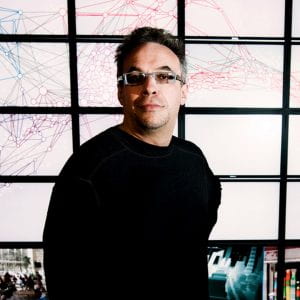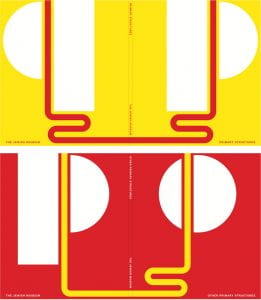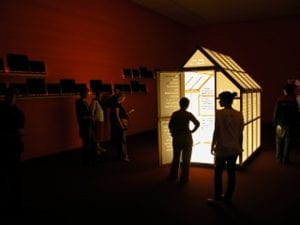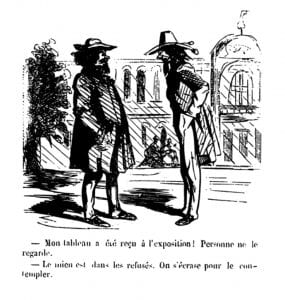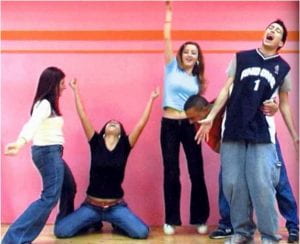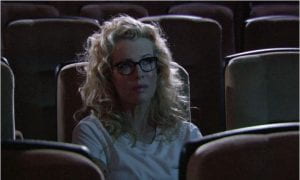| 2015-2016 | 2014-2015 | 2013-2014 | 2012-2013 | 2011-2012 | 2009-2010 | 2008-2009 | 2007-2008 | 2006-2007 | 2005-2006 | 2004–2005 | 2003-2004 | 2002–2003 | 2001-2002 | 2000–2001 | 1999-2000 | 1998–1999 | 1997-1998 | 1996-1997 | 1995-1996 | 1994-1995 | 1992-1993
– – – 2020-2021 – – –
Jill Casid, Form at the Edges of Life
 Dr. Jill. H Casid‘s research participates in critically extending the scope of intersectional queer-feminist interventions in art history by developing methods for approaching modern regimes of visuality, the normalizing and surveilling force of architecture and landscape, and the long histories of global bio- and necropolitics with special emphasis on the vectors of the circum-Atlantic and the force of imaging in the constitution but also the contestation of the sexing and racialized mattering of body and world. Casid has participated actively over the course of their career as both a critic/theorist and artist practitioner in current queer, cripqueer, and trans*feminist art and activist praxis and frequently think with and publish on the work of contemporary feminist, queer, genderqueer, cripqueer and trans artists and artist-activists who drive as they alter the reach of queer and trans* tactics for alternative worldmaking. At the same time, through their single-author monographs Sowing Empire: Landscape and Colonization (Minnesota, 2005) and Scenes of Projection: Recasting the Enlightenment Subject (Minnesota, 2015), and the co-edited volume Art History in the Wake of the Global Turn (Yale, 2014), they have worked to reconstitute landscape, projection, and the geopolitics of art historical method as critical objects vital to intersectional queer-feminist interrogation and revision of the field of art history.
Dr. Jill. H Casid‘s research participates in critically extending the scope of intersectional queer-feminist interventions in art history by developing methods for approaching modern regimes of visuality, the normalizing and surveilling force of architecture and landscape, and the long histories of global bio- and necropolitics with special emphasis on the vectors of the circum-Atlantic and the force of imaging in the constitution but also the contestation of the sexing and racialized mattering of body and world. Casid has participated actively over the course of their career as both a critic/theorist and artist practitioner in current queer, cripqueer, and trans*feminist art and activist praxis and frequently think with and publish on the work of contemporary feminist, queer, genderqueer, cripqueer and trans artists and artist-activists who drive as they alter the reach of queer and trans* tactics for alternative worldmaking. At the same time, through their single-author monographs Sowing Empire: Landscape and Colonization (Minnesota, 2005) and Scenes of Projection: Recasting the Enlightenment Subject (Minnesota, 2015), and the co-edited volume Art History in the Wake of the Global Turn (Yale, 2014), they have worked to reconstitute landscape, projection, and the geopolitics of art historical method as critical objects vital to intersectional queer-feminist interrogation and revision of the field of art history.
Form at the Edges of Life takes the work of art (across a range of practices and media assemblages from photography and performance to site-specific installation and multi-media spectacle) as an everyday laboratory for the development of a situational ethics. Casid’s project proposes an engaged formalism as a vital means of addressing the ethics of aesthetics in global contemporary art practice. Casid’s project suggests that in the vulnerable situation of necropolitics or life exposed to the power of death, art practice can offer experiments with aesthetic form as ways of reckoning with the posthuman situation of death-in-life
– – – 2015-2016 – – –
Robert Whitman, Reflections on Recent Works: Swim and Local Report
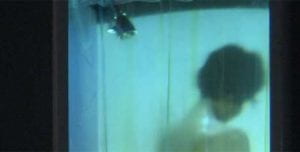 Multimedia artist Robert Whitman will discuss his two latest projects: Swim (2015) and Local Report (2012). Whitman’s career spans multiple decades and disciplines. In the 1960s, he associated with a group of artists, including Allan Kaprow, Jim Dine, and Claes Oldenburg, who staged innovative theatrical performances on Manhattan’s Lower East Side. In 1966, Whitman joined ten other New-York-based artists to work with Billy Klüver at Bell Laboratories, creating artwork which utilized computer media and other emergent technologies. He received the
Multimedia artist Robert Whitman will discuss his two latest projects: Swim (2015) and Local Report (2012). Whitman’s career spans multiple decades and disciplines. In the 1960s, he associated with a group of artists, including Allan Kaprow, Jim Dine, and Claes Oldenburg, who staged innovative theatrical performances on Manhattan’s Lower East Side. In 1966, Whitman joined ten other New-York-based artists to work with Billy Klüver at Bell Laboratories, creating artwork which utilized computer media and other emergent technologies. He received the  Guggenheim Fellowship for Creative Arts in 1976, and has been the subject of retrospectives at such prominent institutions as DIA and MoMA. His recent theatrical performances employ telecommunications networks and multisensory elements to conceive new communities of spectatorship in the theater and gallery alike. For more information on LOCAL REPORT you can visit the projects’s website: http://whitmanlocalreport.net
Guggenheim Fellowship for Creative Arts in 1976, and has been the subject of retrospectives at such prominent institutions as DIA and MoMA. His recent theatrical performances employ telecommunications networks and multisensory elements to conceive new communities of spectatorship in the theater and gallery alike. For more information on LOCAL REPORT you can visit the projects’s website: http://whitmanlocalreport.net
This event celebrates the 50th anniversary of the Experiments in Art and Technology (E.A.T.) founded by Robert Whitman among others. It is a vibrant community of artists that redefined what constituted art in the twentieth century.
§
Lev Manovich, Instagram as a Medium and Message: Art History Meets Data Science
New media theorist Lev Manovich speaks about his latest project SELFIECITY, a data science investigation of self-portraiture in five cities around the world. Manovich is the author of seven books including Software Takes Command (2013), Soft Cinema: Navigating the Database (2005), and The Language of New Media (2001). His current research concerns the development of Cultural Analytics, or the computational analysis and visualization of massive cultural visual datasets in the humanities. In addition to his academic commitments, Manovich works with computer media as an artist, exhibiting his artwork across the world. He is the recipient of a number of grants and fellowships, most notably from the Guggenheim foundation, the Andrew Mellon foundation, National Endowment of the Arts, and the National Science Foundation. He received his PhD in Visual and Cultural Studies from the University of Rochester in 1993. For more information on SELFIECITY you can visit the project’s website: http://selfiecity.net
– – – 2014-2015 – – –
Robert Storr, On Louise Bourgeois and the Privilege of Sublimation
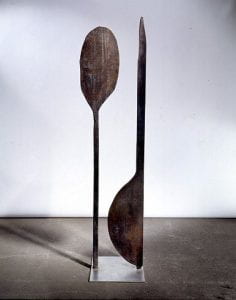
Louise Bourgeois, Paddle Woman, 1947, Bronze, 57 3/4 x 16 1/4 x 12 inches, Edition of 6. Courtesy of Cheim & Reid.
Renowned art critic and curator Robert Storr derives his lecture from his forthcoming book, Intimate Geometries: The Work and Life of Louise Bourgeois (2014). Storr was curator in the Department of Painting and Sculpture at the Museum of Modern Art, New York, from 1990 to 2002, where he organized exhibitions on Elizabeth Murray, Gerhard Richter, Max Beckmann, Tony Smith, and Robert Ryman. In addition to writing for numerous art publications, he has taught at the Institute of Fine Arts, CUNY graduate center, and the Bard Center for Curatorial Studies, as well as the Rhode Island School of Design, New York Studio School, and Harvard University. He is currently Professor of Painting/Printmaking and Dean of the School of Art at Yale University.
§
Candice Breitz, From A to B and Back Again
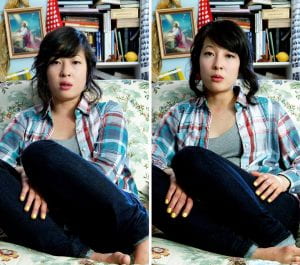
Candice Breitz, Factum Kang, 2009, Dual-Channel Installation: 2 Hard Drives, Duration: 69 minutes, 10 seconds, Commissioned by The Power Plant, Toronto.
Candice Breitz is a Berlin-based artist whose moving image installations have been shown internationally. She has been a tenured Professor at the Hochschule für Bildende Künste in Braunschweig since 2007. Breitz has spent long stretches of time producing works in Jamaica, Italy, Germany, Austria, Japan, Sweden, Great Britain, Ukraine, South Africa, the United States, India, and Nigeria. Her immersive practice seeks to capture and observe the nuanced ways in which individuals relate to and are determined by the dense social constellations in which they exist. She will talk about and screen footage from several works that she has made on the road over the last decade, discussing the ways in which her creative practice has been shaped by the myriad of people and places that each work must negotiate as it comes into being.
§
Paul Chan, Odysseus as Artist
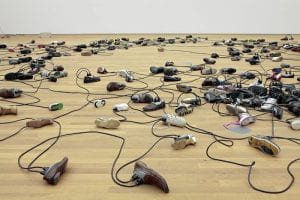
Paul Chan, Master Argument, 2013 (detail), Installation view, Paul Chan – Selected Works, Schaulager, Basel, 2014. Courtesy Greene Naftali gallery and Paul Chan.
In this lecture, artist and founder of the publisher Badlands Unlimited Paul Chan explores the following: that moment, elation, “echo reconciles,” Adorno, form, “fatefulness,” the Odyssey, Calypso, cave, Odysseus, contemporary art, homesickness, zones of engagement, Ithaca, luxury, alienation, the Iliad, force, gravity, cunning, polutropos, Athena, sophia, honor, themis, aristoi, Hesiod, aidos, glory, demos, bow and arrow, harbinger, reason, Athenian democracy, and art as cunning. Chan’s book, Paul Chan: Selected Writings 2000–2014, was recently published in conjunction with his exhibition Selected Works at Schaulager in Basel, Switzerland (April 11–October 19, 2014).
– – – 2013-2014 – – –
Jens Hoffmann, Curatorial Déjà vu
In his lecture, Jens Hoffmann explores the recent trend in exhibition making to revisit, recurate or otherwise reanimate historically important exhibitions. Hoffmann discusses his thoughts and ideas that culminated in his recent revival of two legendary shows from the 1960s: Primary Structures (The Jewish Museum, New York, 1966) and Live in your Head: When Attitudes Become Form (Kunsthalle Bern, 1969), resulting in Other Primary Structures (The Jewish Museum, New York, 2014) and When Attitudes Became Form Become Attitudes (CCA Wattis Institute for Contemporary Art, San Francisco, 2012).
Jens Hoffmann is an exhibition maker and writer, and is currently Deputy Director of The Jewish Museum, New York.
Watch the lecture here.
§
Yvonne Rainer, The Aging Dancer and Her Dis/contents
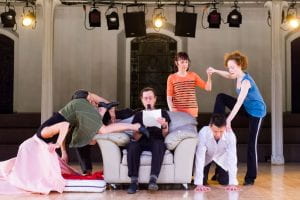
Dancers Patricia Hoffbauer, Emmanuélle Phuon, Yvonne Rainer, Pat Catterson, Keith Sabado, and Emily Coates. Photographer: Ian Douglas.
Yvonne Rainer’s lecture includes autobiographical accounts and excerpts from a documentation of her most recent choreography Assisted Living: Do You Have Any Money? (2013), an amalgam of movement and speech derived from a number of different sources, including Rainer’s own choreographic imagination and her collaborative process with her dancers. The piece presents new challenges for the group in that they are required to deliver long monologues while performing intricate steps. Following her customary penchant for radical juxtaposition, Rainer has taken the risky route of pairing vaudevillian pratfalls with solemn socio-economic analyses. The dire times in which we live seem to demand such an approach.
Watch the lecture here.
§
Mary Kelly, Projects: 1973-2010
In her lecture, Mary Kelly explored the questions of sexuality, identity and historical memory that have prompted her project-based work for over four decades. She considered how these questions are shaped by a debate-specific site and why her narrative installations rely not only on the story unfolding between words and objects, but also on the viewer’s experience of space.
Watch the lecture here.
The 2013-2014 Art History & Criticism Lecture Series is generously funded by the Stony Brook Graduate Students Organization, the Building Graduate Communities Initiative of the Graduate School, and the Department of Art at Stony Brook University.
– – – 2012-2013 – – –
Okwui Enwezor, Intense Proximity: The Disappearance of Distance
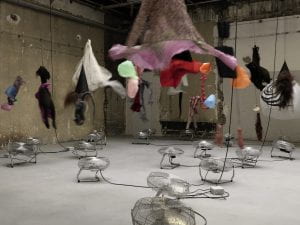
Exhibition view « La Triennale, Intense Proximité », 04/12/12 – 08/26/12, Palais de Tokyo (Paris). Photo: André Morin. Annette Messager, Motion/Emotion, 2012, Courtesy of the artist and Marian Goodman Gallery, New York, Paris,ADAGP Paris 2012.
Okwui Enwezor (Nigeria, 1963) is an international curator and the Director of the Haus der Kunst in Munich, Germany. He has curated many exhibitions and festivals all over the world including the Johannesburg Biennale in South Africa (1997), the Bienal Internacional de Arte Contemporaneo de Sevilla, in Spain, the Gwang-ju Biennale in South Korea (2008), and Intense Proximity: La Triennale 2012, in France. He was the artistic director of Documenta 11 in Kassel, Germany, in 2002, and was Dean of Academic Affairs and Senior Vice President of San Francisco Art Institute (2005-2009).
Watch the lecture here.
§
Thierry de Duve, The Invention of Non-Art
Now out of fashion but endemic in the art criticism of the 1960s, the expression ‘non-art’ usually refers to works by Dada or Neo-Dada artists that deliberately eschew or mock the look of art. Some critics even credit a single artist for the paternity of non-art, claiming that it came into being with Marcel Duchamp’s invention of the readymade. De Duve shall argue that this is an optical illusion resulting from the confusion between author and messenger. He shall then defend the view that non-art is actually a side-effect of the 19th century French Beaux-Arts system, an involuntary consequence of the binary structure of aesthetic judgment at the Salon.
The 2012-2013 Art History & Criticism Lecture Series was generously funded by the Stony Brook Graduate Students Organization, the Building Graduate Communities Initiative of the Graduate School, and the Department of Art at Stony Brook University.
Watch the lecture here.
– – – 2011-2012 – – –
Claire Bishop, Delegated Performance: Outsourcing Authenticity
One of the most prevalent tendencies in visual art performance since the early 1990s has been the hiring of non-professionals to do performances, rather than these events being undertaken by the artists themselves (as was the case in the majority of body art works of the 1960s through the 1980s). Because this type of performance involves the artist using other people as the material of his or her work, it has occasioned heated debate over the ethics of representation.
In her lecture, Claire Bishop will argue against such ethical readings of these more recent performances, and in favor of a more complex and troubling understanding of the social dynamics they enact. Informed by Pierre Klossowski’s text La Monnaie Vivante (1970), and the French curator, Pierre Bal-Blanc’s itinerant European performance project inspired by Klossowski’s writings, Bishop will propose that the outsourcing of labor in delegated performance reveals our persistent desire to be exhibited and exploited.
§
Ina Blom, Cinema, Architecture and Collectivity: Report on a Reversed Movie Production
Imagine a reversed movie production process – one starting with the advertising campaign and – moving backwards through all the normal stages of postproduction and production, – ends where it all normally starts: with the writing of a screenplay. Imagine next the screening situation for the outcome of this production: an architectural environment built from the cinematic materials of this production – a veritable Cinecitta if there ever was one. No mere fantasy, such a project was in fact realized in 2007 under the direction of the German artist Tobias Rehberger and starring Hollywood luminaries such as Kim Basinger, Willem Dafoe and Danny de Vito, among many others.
In her lecture Blom will discuss the wider ramifications of an artistic project that is only one (if perhaps the most spectacular) among a series of recent artworks that stage encounters between architecture and moving image media such as cinema and television. The mediatic aspects of contemporary architecture are well known, as are the architectural qualities of various types of media spaces. However, by raising the very encounter between cinema and architecture to a principle, these works above all bring out the question of how collectivity is thought or figured within such an environment. The wider framework for the discussion is the question between art and social ontologies, brought on by the influx of so-called “social” or “relational” art productions.
The 2013-2014 Art History & Criticism Lecture Series is generously funded by the Stony Brook Graduate Students Organization, the Building Graduate Communities Initiative of the Graduate School, and the Department of Art at Stony Brook University.


